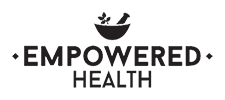As a parent, watching my children grow has been one of the most rewarding experiences, however with growth in children may come a few complications, that are not only very painful and uncomfortable for kids, but also as parents it can leave you feeling helpless. We don’t want to pump our kids with pain-killers every time something hurts but at the same time, it can be heart-wrenching to watch them go through pain which in some cases is inevitable.
The first condition I would like to discuss is Growing Pains.
Are they real?
They most certainly are. Although growing pains have no proven connection to growth spurts in young children and pre-teens, it is believed that it is caused by the depletion of vitamins and mineral children lose by exerting energy throughout their day.
The pain can start anywhere from early evening through to the middle of the night. Usually the pain is isolated to the lower body often affecting the thighs, calves, or behind the knees. The pain can become so intense that your child finds it hard to walk or even wakes them from their sleep.
How can massage therapy help with growing pains?
Although growing pains usually corrects itself, a 30 min massage can help reduce the discomfort of growing pains by soothing the tired achy muscles. Stretches applied by the Therapist can also reduce pain during the day and night, thus allowing both the parents and the child to get a good night’s rest.
What is Osgood-Schlatter Disease? (Knee Pain)
Osgood-Schlatter disease is an inflammation of the area just below the knee where the tendon of the patella attaches to the tibia (shin bone) that occurs during growing adolescents.
It mostly occurs during growth spurts, when bones, muscles, tendons and other structures are rapidly changing.
Although the pain mostly occurs during physical activity such as running and jumping due to the additional stress placed on the muscles and bones, less active adolescents may also develop this pain.
Symptoms of Osgood-Schlatter’s Disease
- Knee pain and tenderness
- Swelling just below the patella
- The front or back of the thigh muscles may feel tight.
How does massage therapy help?
Osgood-Schlatter disease usually corrects itself when the child has completed their growth spurt, typically around the age of 14-16 years old, massage therapy in conjunction with physiotherapy can help alleviate symptoms by stimulating the blood circulation in the legs thus keeping the muscles and tendons flexible. This should alleviate some or most of the pain as well as gentle stretches can also help reduce the pressure placed on the patella
What is Tech Neck?
Tech neck or Text Neck is a term used when the shape of children’s spine changes due to bad posture, usually caused from excessive use of phones, tablets or iPad for several hours a day.
Symptoms include
– Headaches and neck pain
– Numbness and tingling in the fingers
– Limited movement of the neck
– Sleep deprivation/fatigue
– Loss of focus
– Poor school performance
– Behavioral issues
– Difficulty concentrating
– Decreased energy
– Weight gain
If left untreated the child may develop serious complications such as nerve damage, arthritis and spine degeneration.
Massage therapy can help by:
– Loosening up tight and achy neck, shoulder, and upper back muscles.
– Improve posture
– Improve circulation and breathing allowing the body to learn to naturally relax and re focus.
– Improve the child’s energy levels, leading to motivation for outdoor activities.
– And most importantly the child will be more receptive to limiting their screen time, and utilising their time for other activities.
Lilley is a caring and compassionate massage therapist who has had over 15 years experience in this field. Lilley specialises in relaxation and therapeutic massage as well as sports and remedial massage in the treatment of various musculoskeletal pathologies.







